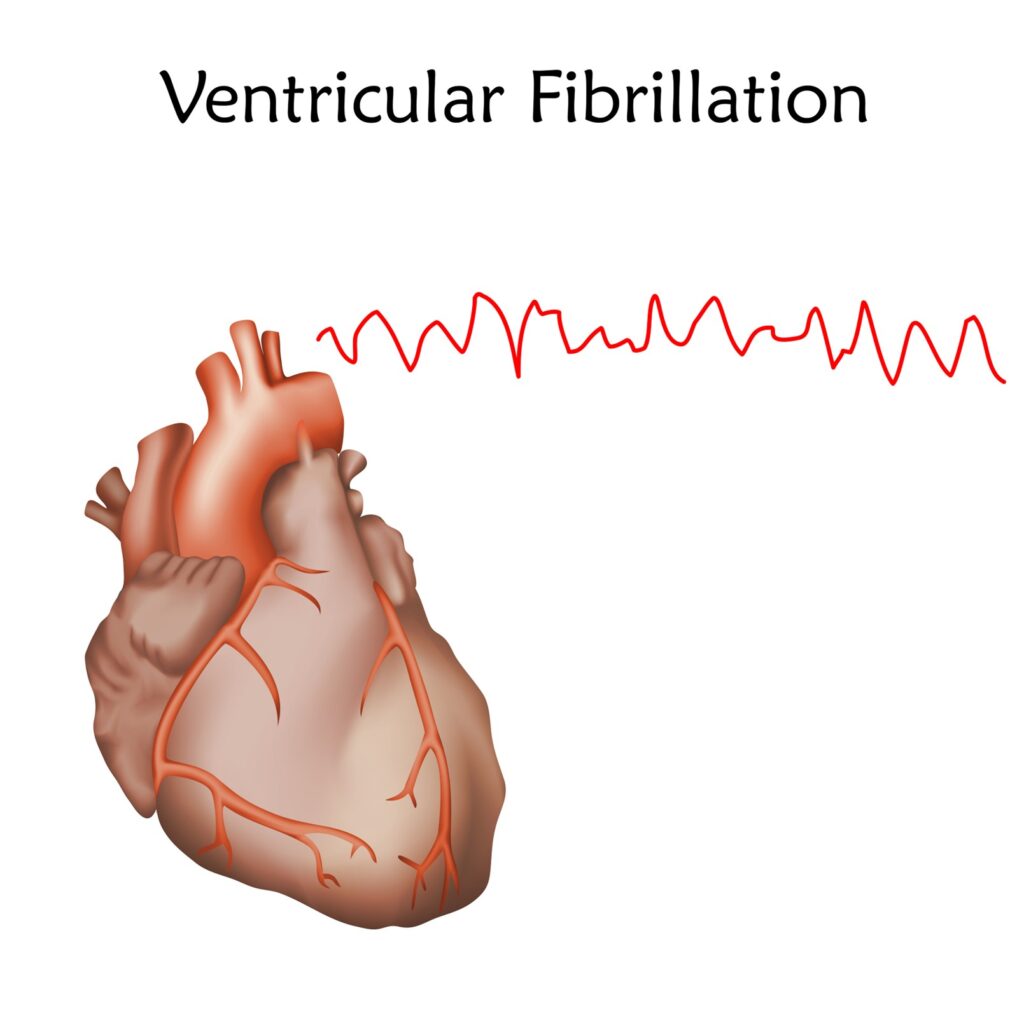Ventricular fibrillation (VFib) is a life-threatening cardiac arrhythmia characterized by rapid, chaotic electrical activity in the heart’s lower chambers, the ventricles.
This irregular rhythm disrupts the heart’s ability to pump blood effectively, leading to sudden cardiac arrest if not treated promptly.
The Mechanism of Ventricular Fibrillation
Normally, the heart’s electrical signals coordinate the rhythmic contraction and relaxation of its chambers, ensuring blood is pumped efficiently to the body.
However, in ventricular fibrillation, this coordination breaks down, causing the ventricles to quiver rapidly instead of contracting and pumping blood.
Without proper blood flow to vital organs, the body quickly succumbs to oxygen deprivation, leading to loss of consciousness and death within minutes if not intervened.
Causes and Risk Factors
Ventricular fibrillation often occurs in individuals with underlying heart conditions, although it can also result from other factors. Common causes and risk factors include:
- Coronary Artery Disease (CAD): Blockages in the heart’s blood vessels can lead to insufficient blood supply to the heart muscle, increasing the risk of VFib.
- Heart Attack (Myocardial Infarction): A heart attack can disrupt the heart’s electrical system, predisposing individuals to VFib.
- Cardiomyopathy: Conditions affecting the heart muscle’s structure or function, such as dilated cardiomyopathy or hypertrophic cardiomyopathy, can trigger VFib.
- Electrolyte Imbalances: Abnormal levels of potassium, magnesium, or calcium in the blood can affect the heart’s electrical activity, potentially leading to VFib.
- Drug Toxicity: Certain medications, illicit drugs, or excessive alcohol consumption can increase the risk of ventricular fibrillation.
- Previous Episodes: Individuals who have experienced VFib before are at higher risk of recurrence.
Signs and Symptoms
Unlike other cardiac arrhythmias, ventricular fibrillation often presents suddenly and without warning. Common signs and symptoms include:
Sudden Loss of Consciousness: VFib can cause an abrupt loss of consciousness, often without any preceding symptoms.
Absence of Pulse: During VFib, the heart’s erratic activity may result in the absence of a detectable pulse.
Gasping or Agonal Breathing: Some individuals may exhibit gasping or abnormal breathing patterns.
Pale or Bluish Skin: Oxygen deprivation may lead to changes in skin color, such as pallor or cyanosis.
Treatment and Management
Immediate intervention is crucial in treating ventricular fibrillation and restoring normal heart rhythm. The following steps are typically taken:
Cardiopulmonary Resuscitation (CPR): CPR helps maintain blood circulation and oxygenation until advanced medical help arrives.
Defibrillation: Defibrillation delivers an electric shock to the heart to interrupt VFib and restore a normal rhythm. Automated External Defibrillators (AEDs) are often used in emergency settings.
Advanced Cardiac Life Support (ACLS): Healthcare providers may administer medications and perform additional interventions to stabilize the patient’s condition.
Coronary Interventions: In cases where coronary artery disease is the underlying cause, procedures such as angioplasty or stent placement may be necessary to restore blood flow to the heart.
Prevention Strategies
While ventricular fibrillation can occur suddenly and unpredictably, certain measures can help reduce the risk:
Maintain Heart Health: Adopting a heart-healthy lifestyle, including regular exercise, a balanced diet, and managing risk factors such as hypertension and high cholesterol, can lower the risk of VFib.
Medication Adherence: Take prescribed medications as directed, especially those for managing conditions such as hypertension or coronary artery disease.
Avoidance of Triggers: Minimize exposure to substances known to increase the risk of VFib, such as illicit drugs or excessive alcohol.
Regular Medical Check-ups: Routine check-ups with healthcare providers can help monitor heart health and detect any underlying conditions early.
Ventricular fibrillation is a serious cardiac emergency that requires immediate intervention. By prioritizing heart health and adopting preventive measures, individuals can reduce their risk of experiencing this deadly heart rhythm disorder.
Remember, early action can make all the difference when it comes to combating ventricular fibrillation and preserving life.


